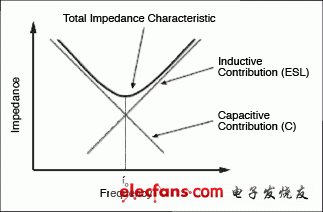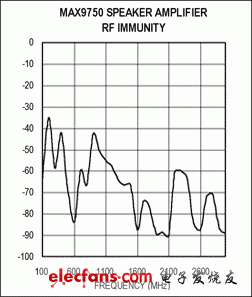introduction
RF suppression, also known as RF sensitivity, has become an important design element in the audio field of mobile phones, MP3 players and notebooks as well as PSRR, THD+N and SNR. Bluetooth technology is increasingly being used as a wireless serial cable replacement for headsets and microphones in mobile devices. Wireless local area network (WLAN) technology using the IEEE 802.11b/g protocol has also become a standard feature for personal computers and notebook computers. TDMA multiplexing in GSM, PCS, and DECT technologies introduces large RF interference. Today's dense RF environment raises industry concerns about the RF sensitivity of electronic circuits and the impact of RF on overall system integrity. The audio amplifier is an RF-sensitive system module.
The audio amplifier demodulates the RF carrier and reproduces the modulated signal and its harmonic components at its output. Some frequencies fall within the range of the audio baseband, producing a "click" at the speaker output of the system that the user does not wish to hear. To avoid this problem, the system designer must fully understand the limitations of the selected amplifier IC and its corresponding PCB layout. This article will teach designers how to optimize the RF rejection of audio amplifier boards.
Looking for sources of RF noise
The key to good layout (ie, better RF rejection) is to first identify the source of RF coupling noise. If the selected audio amplifier has an evaluation board, the evaluation board can be used to check the RF sensitivity of each pin. Select a frequency of interest, such as 2.4 GHz in a WLAN application. According to the antenna principle, an antenna with a lead length of 1.2 inches (a quarter wavelength of a 2.4 GHz RF signal) is highly efficient at a frequency of 2.4 GHz.
l = c/(4*f)
Where l = length, c = 3X108, f = frequency.
A 1.2-inch wire was taken and soldered directly to one of the IC pins to measure (see Appendix) the RF rejection capability of the IC at the frequency of interest (2.4 GHz ± 10%). The 1.2 inch lead is removed and soldered to the other pin of the amplifier to repeat the RF measurement process. Please ensure that the conditions for each test are consistent. Continue the measurement in this way until a 1.2 inch lead is attached to each pin of the amplifier and the RF measurements at the frequency of interest are recorded. Finally, the RF suppression capability of the IC is measured without connecting the antenna to the antenna.
The last test provided us with a benchmark for amplifier performance. Comparing the test results with the previous test results, the amplifier pins that are most sensitive to the RF demodulation signal can be derived. Using this data, we can optimize the PCB design to reduce the RF noise that is coupled to the amplifier pins.
Analysis of the MAX9750 Case: Engineering evaluation results show the nine most RF-sensitive pins in the MAX9750 IC: INL, INR, BIAS, VOL, BEEP, OUTL_, and OUTR_.
Capacitance
Take the BIAS pin of the selected IC as an example. Assuming that the BIAS pin has poor RF rejection at the frequency of interest, the first PCB design to consider is to shorten the lead length from the BIAS pin to the decoupling capacitor. If the RF demodulation is not ideal after optimizing the lead length, consider adding a small bypass capacitor (approximately 10pF to 100pF) to ground at the amplifier pin. The impedance characteristics of the capacitor form a notch filter at the most sensitive frequency of the system (2.4 GHz in this example). Please refer to the impedance characteristics of the capacitance model (C1) in Figure 1A.

Figure 1A. Non-ideal capacitance model

Figure 1B. Non-ideal capacitance model, impedance characteristics
If C1 is an ideal capacitor, the impedance characteristic will decrease as the frequency increases (XC = 1/[2Ï€ xfx C]). However, there is no ideal capacitance in practical applications. The impedance of the non-ideal capacitance model (Fig. 1B) sinks at the self-resonant frequency* and then begins to rise with frequency. When the frequency is greater than fo, the inductance component begins to increase (XL = 2Ï€ xfx L). If the capacitor is used as a filter, this characteristic will make the filtering effect worse when it is close to or higher than its self-resonant frequency. However, if the capacitor is chosen to bypass a particular high frequency component, the self-resonant nature of the capacitor can come in handy.
Analysis of the MAX9750 example: A 33pF capacitor is added to the BIAS pin to improve RF rejection (average 3.6dB).
Control the noise of the input pins
Typically, the input pins of an audio amplifier are always the source of RF-coupled noise, so make sure that the length of the input leads is less than 1/4 of the wavelength of the RF signal of the system. A quiet formation also reduces RF noise coupled to the input pins. A quiet formation should be placed around each input lead of the IC. This ground plane helps isolate the input pins of the selected audio amplifier from any high frequency RF signals.
Analysis of the MAX9750 example: Shortening the input lead length by three times and laying the ground plane on the left, right, and PC-beep pins further improves the RF rejection of the MAX9750 IC (Figure 2).

Figure 2. RF suppression capability test results for the MAX9750C speaker amplifier: noise floor = -94.4dBV.
Note: Figure 2 shows the typical RF rejection capability of the MAX9750 IC. Some external factors such as antenna signal strength, cable length, and speaker type can also affect RF rejection.
We can also use some costly methods, such as adding LC filters to amplifier pins with higher RF sensitivity or adding low ESR capacitors to the board. These methods are effective, but at a higher cost. If you can determine the source of RF noise, you don't need to use a high-cost solution.
to sum up
Audio amplifiers with poor RF rejection can affect the integrity of the overall system design. If you can find the source of the problem, you can take appropriate measures to avoid audio RF demodulation. Typically, the leads at the input, output, offset, and power terminals should be less than 1/4 the wavelength of the system RF signal. If you need to increase RF rejection, you can use a small capacitor to ground the IC pin directly (even if a large capacitor is connected to the pin) and place the ground plane near the pin of the susceptible amplifier. Finally, keep the high-power RF system modules away from the susceptible audio amplifier pins. After taking these measures, the "disgusting" audio demodulation "click" will be eliminated.
* When self-resonant, the capacitive and inductive impedances cancel each other out, leaving only the resistive component. The self-resonant frequency is:
![]()
appendix
In order to obtain accurate, repeatable test results, we need to place the device under test (DUT) in an RF field of known intensity. Maxim has developed a test method that uses an RF shielding laboratory, a signal generator, an RF amplifier, and a field strength detector to measure RF sensitivity for reliable repeatable test results.

Figure A. RF noise suppression capability measurement circuit
Figure A above is a typical op amp test setup (op-amp). The non-inverting input of the amplifier is shorted to ground through a 1.5-inch loop (analog PCB lead). We chose a standard 1.5-inch input lead to compare the RF rejection of multiple Maxim amplifiers (note: the input leads between the DUT and the input source have antenna effects in the system's sensitive frequency range). The output of the amplifier is connected to a preset load. The amplifier is then placed in a shielded test chamber. Maxim's RF Shielding Test System simulates an RF environment where the demodulated signal is monitored at the output of the amplifier.

Figure B. Maxim's RF Suppression Test Method
Figure B shows Maxim's RF shielding test system, which simulates the RF field environment required for RF suppression testing. The test chamber is similar to the shielded chamber of the Faraday chamber, separating the device under test from the external electric field.
The complete test system consists of the following devices:
Signal Generator: SML-03, 9kHz to 3.3GHz (Rhode&Schwarz)
RF power amplifier: 20MHz to 1000MHz, 20W (OPHIR 5124)
RF power amplifier: 1GHz to 3GHz, 50W (OPHIR 5173)
Power meter: 25MHz to 1GHz (Rhode & Schwarz)
Parallel line unit (shield cavity)
Field strength detector
Computer (PC)
Fluke Digital Multimeter (dBV meter)
The computer sets the frequency range, modulation ratio, and modulation type of the signal generator output, as well as the power output of the RF power amplifier. The modulated signal is fed to a corresponding power amplifier (OPHIR 5124: 20 MHz to 1000 MHz, 20 W or OPHIR 5173: 1 GHz to 3 GHz, 50 W) and the output of the amplifier is measured and monitored by a directional coupler and a power meter. The defined RF field is uniformly radiated within the test chamber.
During the test, Maxim placed the device under test in the center of the shielded room. The field strength detector continuously detects the uniform field strength of 50 V/m at which the device under test is placed. The signal used is an RF sine wave with a frequency between 100 MHz and 3 GHz, modulated with an audio frequency of 1 kHz with a modulation of 100%. The device under test is powered by the access port of the test chamber, and the output monitoring device is connected through the access port. The demodulated 1 kHz signal amplitude is monitored in real time using a Fluke multimeter (in dBv). The report results of the Fluke multimeter are recorded while the RF sine wave frequency is varied between 100 MHz and 3 GHz as previously set. Figure C is a test result of a 100 MHz to 3 GHz sweep.

Figure C. MAX9750 RF Suppression Test Results
Power X (Qingdao) Energy Technology Co., Ltd. , https://www.solarpowerxx.com